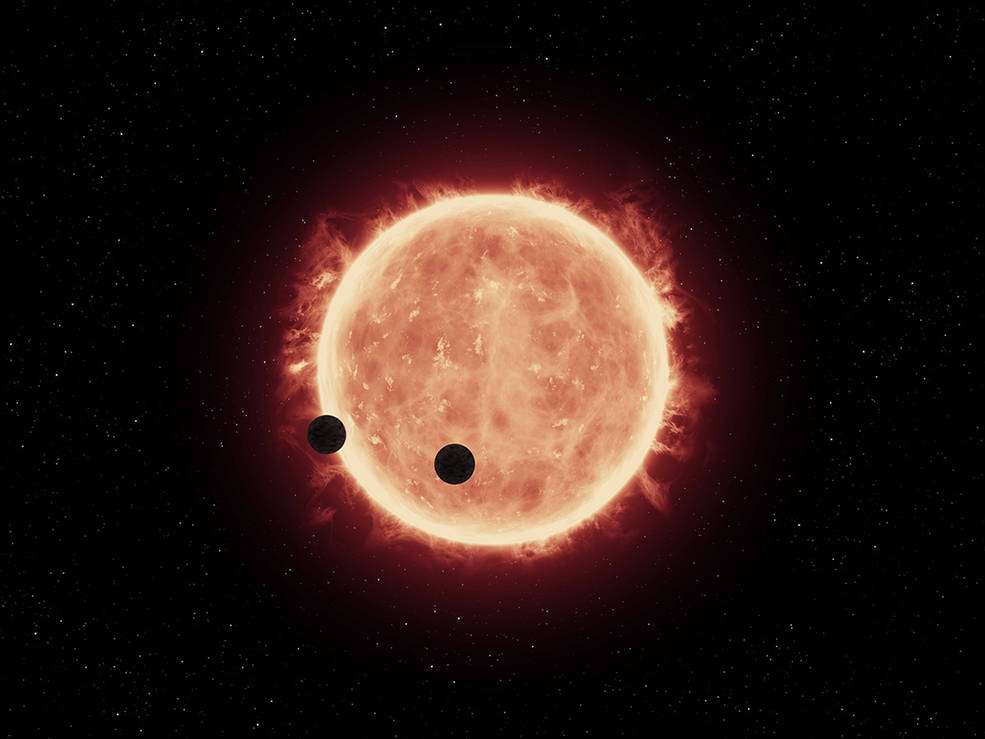Two planets the size of Earth orbiting a nearby star have been confirmed to have a rocky landscape, bolstering the theory that they might be habitable, a new study finds.
Space.com reports that the atmospheres of these two could be anything, from incredibly thin like Mars, or suffocating and dense, like Venus. It might also possible be something in the middle, like Earth’s, scientists say.
Astronomers discovered three Earth-sized planets going round a cold, red star named TRAPPIST-1. This cool dwarf star is located in the constellation Aquarius, which is 39 light-years away from Earth. Prior studies have found TRAPPIST-1 to be 2,000 times dimmer than the sun, less than half as warm, around a twelfth of its mass and less than an eighth its width, making this star only slightly bigger than Jupiter.
“Ultracool dwarfs” like TRAPPIST-1 are common in the Milky Way galaxy, accounting for up to 15% of the stars. The scientists who found TRAPPIST-1 suggested that these kinds of stars might be the most viable places to look for life in the universe, because they may be the only places where modern technology and tools can detect signs of life.
Upon observing the size and temperatures of the three planets orbiting TRAPPIST-1, researchers initially thought that certain areas could be habitable, having surfaces with the right temperatures to sustain liquid water – a primary ingredient in life on Earth. However, it was unclear if the planets had rocky formations.
Now, TRAPPIST-1 scientists have used NASA’s Hubble Space Telescope to confirm that the two innermost planets, called TRAPPIST-1b and TRAPPIST-1c, are indeed mainly rocky.
The astronomers caught a rare event using the telescope: a double transit, when two planets pass in front of their star at almost exactly the same time. It was 1b and 1c they saw in double transit.
Study lead author Julie de Wit, a Massachusetts Institute of Technology planetary scientist, said that, “We actually have the capabilities to study the atmosphere of potentially habitable worlds with a facility, Hubble, designed in the ’70s, well before we started to detect exoplanets.”
By analyzing the spectrum of light caused by the double transit, the scientists garnered insight into both planets at the same time. This is the first time a double transit has been used to study the atmospheric propertied of two exoplanets simultaneously, de Wit said.
The incident, incredibly enough, happened on May 4, “Star Wars Day.” De Wit told Space.com, “The force was definitely with us.”
The dips in TRAPPIST-1’s light as the double transit happened were a narrow range of wavelengths that showed little variation. If the dips had varied significantly, the data would have suggested that the planets have light, large, puffy atmospheres like that of gaseous Jupiter. Instead, the information gathered appears to show that the two planets have compact atmospheres, such as those of rocky planets, the scientists observed.
It remains unclear what specific kinds of atmospheres these planets really have. “The next step is to try to disentangle all these possible scenarios that exist for these terrestrial planets,” de Wit said in a statement.
The study was published in the journal Nature.
























